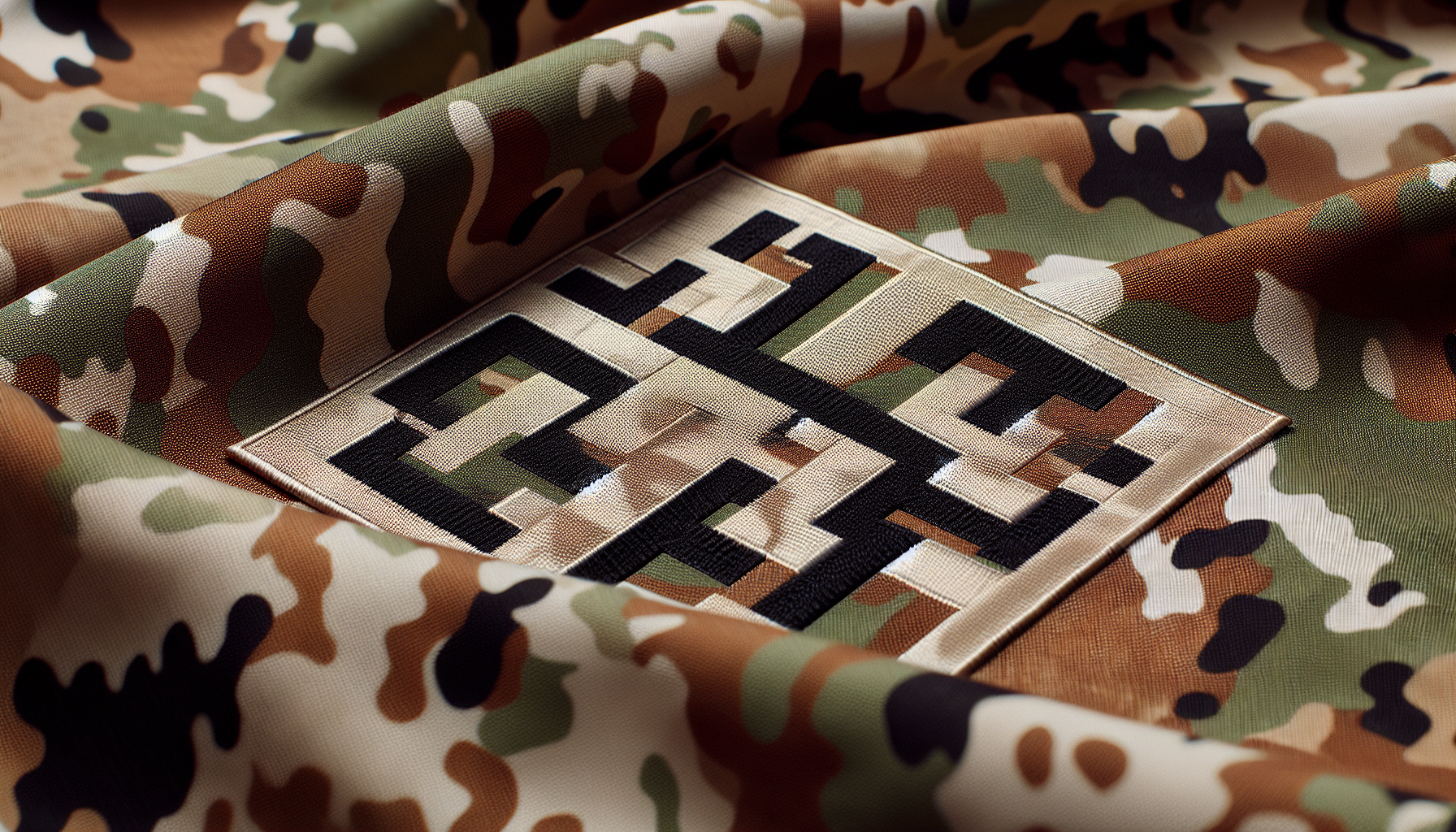Camouflage clothing has long been associated with military use, but did you know it also carries cultural significance and symbolism? From its origins in war and hunting to its adoption by certain subcultures, camouflage clothing has become a powerful symbol of identity and rebellion. Join us as we explore the fascinating history and meaning behind this ubiquitous pattern.

Historical Context of Camouflage Clothing
Emergence and development of camo clothing in military
Camouflage clothing has a rich history deeply rooted in military applications. It first emerged during World War I when armies realized the need for strategies that could hide soldiers and equipment from their enemies. Initially, simple khaki and olive drab uniforms were used, but as technology advanced, so did the development of camouflage patterns. During World War II, more intricate designs were created to match the diverse landscapes of battlefields. These patterns incorporated various colors, shapes, and even disruptive elements to break up the human silhouette.
Use in hunting and outdoor sports
While camouflage clothing initially gained prominence in the military, its utility extended beyond the battlefield. Hunters recognized the advantage of blending into their natural surroundings to gain a tactical advantage over their prey. This led to the adoption of camouflage patterns in hunting attire, making it easier for hunters to approach their targets undetected. Over time, camouflage clothing became synonymous with outdoor sports such as paintball, airsoft, and birdwatching, where the ability to remain hidden is crucial.
Transition from field to fashion
Camouflage clothing eventually transitioned from its practical military and outdoor sport origins to the world of fashion. The influence of military style on the fashion industry played a significant role in bringing camouflage patterns into the mainstream. Designers began incorporating camouflage elements into their collections, introducing a rugged and rebellious aesthetic to the runway. This fusion of functionality and style led to the birth of “camo couture” in the Western world.
Cultural Significance of Camouflage in the Military
Symbol of bravery and honor
Camouflage clothing holds immense cultural significance within the military. Soldiers wear it as a symbol of bravery, representing their willingness to blend into their surroundings and confront danger head-on. The act of donning camouflage can evoke a sense of pride and honor, signifying one’s commitment to serve and protect their country. This symbolism is deeply ingrained in military traditions and reflects the valor associated with those who wear it.
Indicative of ranks and roles
Beyond its symbolic value, camouflage clothing also serves a practical purpose within the military hierarchy. Different camouflage patterns and colors are often used to indicate ranks and specific roles within a military force. This system helps identify soldiers at a glance, providing crucial information for coordination and effective deployment on the battlefield. By integrating camouflage attire into their uniforms, troops create a sense of unity and identity while simultaneously fulfilling functional requirements.
Relevance in different military forces across the world
Camouflage clothing is not restricted to any particular nation or culture—it spans across various military forces worldwide. Each country often develops its unique camouflage patterns, tailored to its natural surroundings and operational requirements. The adoption of camouflage by different military forces not only showcases its practical value but also underscores its cultural significance as an essential element of warfare. Whether it is the woodland patterns of European armies or the desert-inspired designs of Middle Eastern militaries, the use of camouflage is a shared language among soldiers worldwide.
Camo in Consumer Fashion
Influence of military style on fashion trends
The influence of military clothing on fashion trends cannot be overstated. Throughout history, military designs have made a significant impact on civilian fashion, and camouflage patterns are no exception. The rugged and utilitarian aspects of camo clothing appeal to fashion enthusiasts seeking a distinct and edgy style. The military-inspired trend has permeated various fashion subcultures, from punk to streetwear, becoming an integral part of the fashion landscape and reflecting society’s fascination with the imagery and symbolism of war.
Camouflage in streetwear
Streetwear, renowned for its bold and unconventional style, has fully embraced camouflage as a staple element. Camo streetwear blends comfort, functionality, and a rebellious edge, resonating with urban youth culture. The incorporation of camouflage patterns in hoodies, jackets, and pants has become commonplace, conveying a sense of nonconformity and individuality. The popularity of camo streetwear extends beyond the streets, making its way into mainstream fashion, music videos, and celebrity wardrobes.
Western world and the high fashion ‘camo couture’
The reach of camouflage in fashion extends even further, infiltrating the realm of high fashion. Luxury brands have explored the juxtaposition of military-inspired camouflage with high-end materials and avant-garde design techniques. The result is a fusion of functional camo patterns with exquisite craftsmanship, creating a unique blend of street credibility and sophistication. Camo couture collections have been seen on prestigious runways, elevating camouflage from its utilitarian origins to the pinnacle of style and exclusivity.
Camouflage in Music and Pop Culture
Emerging as a symbol of rebellion
Camouflage clothing has long been associated with symbols of rebellion and counterculture movements. From its origins in military attire, camo clothing found its way into the world of music and pop culture, becoming a powerful symbol of defiance against societal norms. The distinct aesthetic of camouflage serves as a visual representation of resistance, enabling individuals to express their dissatisfaction with the status quo and embrace marginality.
Representation in hip-hop culture
In particular, the relationship between camouflage and hip-hop culture is deeply intertwined. Starting in the 1980s, rap music embraced military-inspired clothing, including camouflage attire. Hip-hop artists used camo to signify strength, power, and determination in the face of adversity. Camouflage patterns became an essential component of the hip-hop fashion aesthetic, serving as a visual representation of resilience and urban identity.
Association with rock and country music
While camouflage’s association with hip-hop culture is well-established, its influence extends beyond this genre. Rock and country music have also embraced camouflage clothing, each with their unique interpretations. In rock music, camo attire often symbolizes rebellion against authority and mainstream culture, while in country music, it can evoke themes of rural living, hunting, and the outdoors. The versatility of camouflage as a symbol in different musical genres showcases its ability to transcend boundaries and resonate with diverse cultural expressions.
Symbolic Significance of Camouflage in Non-Western Cultures
Camouflage in African cultures
In African cultures, camouflage holds unique symbolic significance. In some traditional societies, hunters wear camo-like garments as a means of imitating animal patterns, creating a spiritual connection and allowing them to blend in seamlessly with the natural world. Camouflage clothing in this context represents a harmonious relationship between humans and nature, reflecting the deep respect and understanding traditional African communities have for their environment.
Asian perspective of camouflage
In Asia, the symbolic significance of camouflage varies across different countries and cultures. In Japan, for example, the use of camouflage patterns in fashion often reflects the influence of Western streetwear. Camo attire can exude a sense of rebellion and nonconformity in Japanese youth subcultures. In contrast, in countries like China or Korea, camouflage may carry more patriotic associations, symbolizing national defense and martial spirit.
Camo print in Middle-Eastern societies
In Middle-Eastern societies, camouflage clothing is often intertwined with an appreciation for military prowess and national security. Given the geopolitical challenges faced by the region, the adoption of camouflage patterns in fashion can represent a solidary nod to the armed forces and their dedication to safeguarding the nation. These patterns serve as a subtle reminder of the valor and sacrifices made by men and women in uniform.
Camouflage Under Political Spotlight
Interpretations of the camo print in politics
Camouflage clothing has not escaped the political spotlight, with its patterns and imagery often analyzed within a political context. Depending on the region and prevailing political atmosphere, wearing camouflage can convey varying messages. In some cases, it may be seen as an act of patriotism and support for the military, while in others, it can be perceived as a challenge to authority or a symbol of resistance against oppressive regimes.
Military camouflage and national identity
The use of military camouflage patterns can also be a reflection of national identity. Countries often develop unique camouflage designs tailored to their landscapes and specific military requirements. Sporting these patterns can serve as a visible expression of national pride, reinforcing the ideals and values associated with a particular nation’s armed forces. The act of wearing camouflage can create a sense of unity and shared purpose among citizens, solidifying their commitment to protect and defend their homeland.
Camo in political protests
Camouflage clothing has often become a symbol of political protests. Activists and protestors may turn to wearing camouflage patterns to convey their opposition to government policies or to align themselves with certain causes. The adoption of camouflage can imply a desire to remain hidden from those in power, while also representing a collective effort to challenge authority and strive for change. The presence of camouflage in political protests exemplifies its ability to manifest as a visual language of resistance against oppressive systems.
Controversies Around Camouflage Clothing
Debate over the use of military camouflage by civilians
The use of military-inspired camouflage clothing by civilians has sparked debates surrounding its appropriateness and ethics. Some argue that wearing military-style camouflage as a fashion statement trivializes the sacrifices made by soldiers and disrespects the uniform’s intended purpose. Others see it as a harmless fashion trend without any direct harm caused. This ongoing debate raises questions about the boundaries of cultural appropriation and the potential impact of commercializing military symbols.
Legal implications in wearing camo clothing
Alongside the ethical and cultural conversations surrounding camouflage clothing, legal implications have also arisen. Many countries have laws in place that regulate the use of military camouflage patterns by civilians. These laws aim to protect military personnel and maintain the integrity of military symbols. Wearing unauthorized camouflage in certain contexts can lead to legal repercussions, emphasizing the need for individuals to understand and respect the legal frameworks governing the use of these patterns.
Issues of cultural appropriation
The adoption of camouflage patterns by mainstream fashion has also brought to light issues of cultural appropriation. Camouflage has deep roots in military history and represents significant cultural and symbolic meanings within various contexts. When these patterns are divorced from their origins and incorporated into fashion without proper acknowledgment or respect, it can perpetuate a cycle of cultural appropriation. It is important for designers and consumers alike to approach the use of camouflage with sensitivity and awareness of its cultural significance.
Camouflage as a Modern Social Symbol
Camouflage as an emblem of resistance
In present-day society, camouflage clothing continues to serve as an emblem of resistance against established norms and power structures. Its association with counterculture movements and subcultures reinforces its symbolic value as a tool for expressing dissent and challenging authority. By wearing camouflage, individuals assert their refusal to conform, highlighting their commitment to personal freedom and individuality.
Expression of masculinity and power
The strong and masculine connotations of camouflage clothing contribute to its popularity as an expression of power and dominance. The rugged aesthetic associated with camo patterns resonates deeply with traditional notions of masculinity, allowing individuals to claim a sense of strength and authority. This association with power can be seen in various domains, from fashion to sports, where the use of camouflage often signifies a desire to project a macho image.
Camouflage in modern youth culture
Camouflage clothing has garnered immense popularity among modern youth culture, reflecting the desire for individualistic expression and rebellion against societal norms. Its appeal lies in the sense of identity and belonging it provides, allowing individuals to associate themselves with specific subcultures and communities. Camouflage attire has become a unifying symbol within youth groups, fostering a sense of camaraderie and solidarity amongst like-minded individuals.
Camouflage in Art and Design
Camouflage print in abstract expressionism
Camouflage patterns have also found their way into the realm of art, particularly within the genre of abstract expressionism. Artists have incorporated camouflage imagery into their works as a means of exploring themes of concealment, identity, and perception. The disruptive nature of camouflage disrupts the viewers’ visual experience and raises questions about the boundaries between reality and illusion. By adapting camouflage into the artistic medium, artists contribute to the ongoing dialogue surrounding the cultural and social implications of these patterns.
Role of camouflage in contemporary art
In contemporary art, camouflage serves as a powerful tool for artists to comment on issues such as war, conflict, identity, and social structures. Through the use of camouflage patterns, artists challenge established narratives and confront viewers with uncomfortable truths and contradictions. The deliberate use of camouflage in art encourages introspection and critical thinking, urging audiences to question societal norms and the systems that camouflage reality.
Influences in interior and product design
Camouflage patterns have permeated beyond clothing and art, making their way into interior and product design. The aesthetics of camouflage have captivated designers, leading to the incorporation of camo patterns in furniture, textiles, and even technology. These designs often create a sense of intrigue, combining functionality with aesthetic appeal. The use of camouflage in design allows individuals to bring a touch of the military-inspired aesthetic into their everyday lives, showcasing its adaptability and enduring popularity.
Concluding Thoughts on the Cultural Significance of Camouflage
The cultural significance of camouflage clothing is vast and multi-faceted, spanning across various industries and cultural contexts. What began as a practical military strategy has evolved into a symbol of bravery, rebellion, and power. Camouflage patterns have infiltrated fashion, music, art, and design, manifesting in different forms and representing different cultural interpretations.
The way we understand and interpret camouflage is deeply rooted in our collective history, as well as our individual experiences and cultural backgrounds. It serves as a visual language, enabling individuals to express their identity, challenge societal norms, and create a sense of belonging. The cultural significance of camouflage continues to evolve, with new trajectories for its symbolism emerging in response to changing social dynamics and global influences.
As we navigate the complexities surrounding camouflage, it is essential to approach its aesthetics and symbolism with respect and awareness. Understanding the historical, cultural, and political implications of camouflage can lead to a more nuanced appreciation of its significance, allowing us to engage in meaningful dialogues about its meaning and impact on society. By examining the various perspectives and contexts in which camouflage operates, we can better comprehend its powerful role as a cultural symbol.



